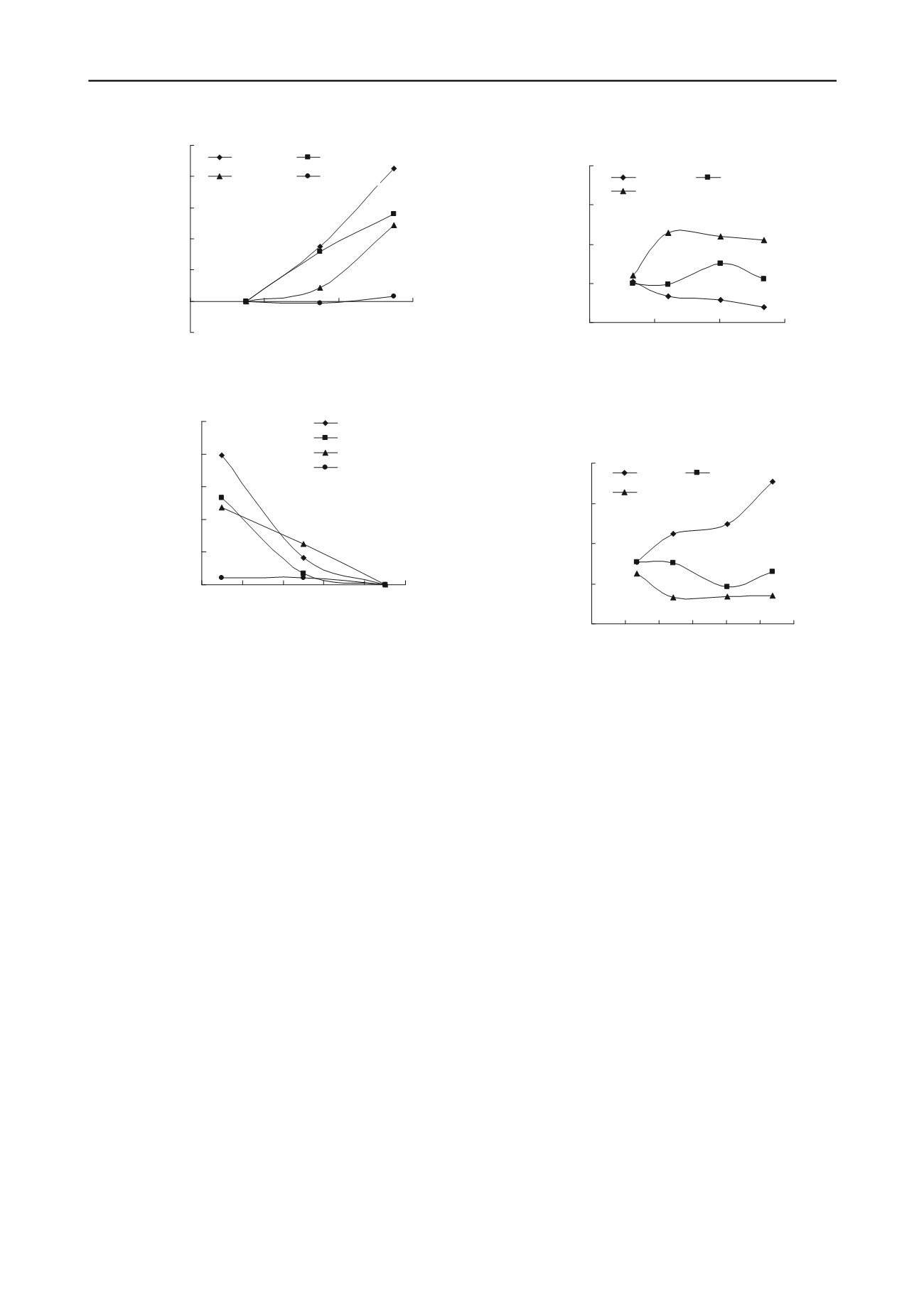
1083
Technical Committee 106 /
Comité technique 106
- 1
0
1
2
3
4
5
10
12
14
16
Moisture content
(
%
)
Compressive coefficient
change ratio
2684. 9KJ/ m3
2013. 7KJ/ m3
1208. 2KJ/ m3
671. 2KJ/ m3
Fig. 4 Change ratio of compressive coefficient vs. initial moisture
content under same compacting energy
0
1
2
3
4
5
11 12 13 14 15 16
Moisture content
(%)
Compressive modulus
change ratio
2684. 9 KJ/ m3
2013. 7 KJ/ m3
1208. 2 KJ/ m3
671. 2 KJ/ m3
Fig. 5 Change ratio of compressive modulus vs. initial moisture
content under same compacting energy
3.3 Compressive property for same compacting energy
At the same initial moisture content, the compressive coefficient
is not monotone decreasing and the compressive modulus is not
monotone increasing with the compacting energy increasing,
seen figs. 6 and 7.
When the initial moisture content equals to 11.5%, the
compressive coefficient is the minimum and the compressive
modulus is the maximum at the compacting energy of 2684.9
kJ/m
3
. When the initial moisture content equals to 15.5%, the
compressive coefficient is the minimum and the compressive
modulus is the maximum at the compacting energy of 671.2
kJ/m
3
. Similarly, when the initial moisture content equals to
13.5%, the compressive coefficient reaches the largest value and
the modulus dose the smallest value at the compacting energy
equal to 1208.2 kJ/m
3
.
Considering the data in table 2, it can be seen that the
maximum compression modulus, meanwhile, the smallest
compressive coefficient is reached when the initial moisture
content is equal or closed to the optimum moisture content
under a particular compaction energy. This emphasises that the
initial moisture content is a very important index for obtaining a
maxmum dry density for given compacting energy. The dry
density represeants the dense condition and degree of
compaction of backfill. Therefore the initial moisture content of
compacted loess like silt is one of the most important control
indexes for the compaction quality control. To get a high quality
of loess like silt backfill, the initial moisture content of the
backfill must be strict controlled when the dry density meets the
design requirement.
0
0.1
0.2
0.3
0.4
0
1000
2000
3000
Compact i ng ener gy( KJ/ m3)
Compressive coefficient
α
1-2
( 1/ MPa)
w=11.5%
w=13.5%
w=15.5%
Fig.7 Curves of compacting energy vs. compressive coefficient at
same initial moiture content
0
10
20
30
40
0 500 1000 1500 2000 2500 3000
Compacting energy (KJ/m3)
Compr
essi
ve modulus
Es
1-2
(MPa)
w=11. 5% w=13. 5%
w=15. 5%
Fig.8 Curves of compacting energy vs. compressive modulus at
same initial moisture content
The initial moisture content of compacted loess like silt is
one of the most important control indexes for the compaction
quality control. To get a high quality of loess like silt backfill,
the initial moisture content of the backfill must be strict
controlled when the dry density meets the design requirement.
4 CONCLUSIONS
In the present study, the following conclusions can be made
about the compressive property of compacted loess like silt.
The maxmum dry density increases and the optimum
moisture content decreases with the increment of compaction
energy.
When the compacting energy is same, the compressive
modulus decreases and compressive coefficient increases with
the increment of initial moisture content.
When the initial moisture content is same, the compressive
iparameters are not monotone changing with the compacting
energy increasing. The maximum compression modulus (or the
minmum compressive coefficient) is reached under a particular
compaction energy when the water content is exactly the
optimum water content corresponding to the compaction energy.
5 ACKNOWLEDGEMENTS
The authors would like to thank the financial supports of
National Natural Sciences Foundation of China (No.51178287)
and Natural Sciences Foundation of Shanxi Province
(No.2010011029).


